Night Offshore Windfarm HEMS Winch Training CFIT (BK117C1 D-HDRJ)
During night-time offshore helicopter hoist training Airbus Helicopters BK117C1 D-HDRJ, operated by Helicopter Emergency Medical Service (HEMS) operator DRF, impacted the Baltic on 28 Feb 2014 in a Controlled Flight Into Terrain / Water (CFIT). Three of the four crew died. The helicopter, on emergency stand-by for a windfarm complex, had been approaching a small vessel for night winch training. The German accident investigation agency, the BFU, has recently published their report.

Wreckage of DRF BK117 (Credit: BFU) – Note: BFU traditionally eliminate all reference to aircraft registration from their accident reports hence the pixilated registration
The Accident Flight
The crew of four, Pilot in Command (PIC), co-pilot, one winch operator or Helicopter Hoist Operation Crew Member (HHO-CM), who was also paramedic, and an emergency physician, intended to conduct helicopter hoist training above a sea rescue vessel over sea at night. A night-VFR flight plan had been filed.
…the sky was overcast, there neither was moonshine nor starlight, humidity was high, and there was slight precipitation. The visibility of light was considerably reduced. There neither were any illuminated ships in the vicinity nor could light sources at shore be seen.
The sea was also described as “almost wave-less” further reducing the visual clues. The aircraft departed Rugen at 17:52.
After take-off the crew flew to wind park [i.e. Windfarm] Baltic 1 supported by the flight director [i.e. autopilot] and subsequently to the prearranged meeting point with the [23m] sea rescue vessel.
Prior to reaching the vessel and the visual identification the approach was flown manually without the support of the flight director. The first direct approach had to be terminated due to the low visibility and the late identification of the sea rescue vessel.
Another attempt, with the co-pilot flying a left-hand circuit was successful.
His reference point and possible reference concerning the flight attitude was the illuminated ship which was in his field of vision. Then three hoist manoeuvres were conducted.
The PIC in the right-hand seat took over controls after the subsequent departure from the ship. He too manually conducted a left-hand traffic pattern without support of the flight director…. Except for the final approach the ship was always left of the helicopter, in an area the PIC for the most part could not see since he was in the right-hand seat. …there were no other illuminated ships in the vicinity, nor could the close shore be seen. Therefore he had to control the helicopter solely with the flight instruments in low altitude, comparatively low airspeed, and no visible external references.
The aircraft was fitted with only one radar altimeter (RADALT).
It was located on the instrument panel of the PIC in the right-hand seat and was therefore outside the normal field of vision of the co-pilot in the left-hand seat.
During the next approach the crew discussed the previous hoisting and the problems with the Hi-line, radio calls were also made to the vessel and ATC.
These communications increased [the PIC’s] workload and it is highly likely that they distracted him from focusing on manually controlling the helicopter purely according to the instruments.
The descent commenced in the downwind leg.
During the base leg [between the downwind leg and the approach into wind] the search light was switched on in addition to the already illuminated landing lights. As a result the high humidity surrounding the helicopter must have been very milky and bright which would have made it more difficult to see the sea rescue vessel and the surface of the water. The smooth sea was probably a contributing factor for the crew not noticing approaching the water’s surface.
During the approaches flown by the PIC, occurring without visual contact to the rather small illuminated ship or any other visible external reference to determine flight attitude, it has to be assumed that flight conditions corresponded with instrument flight rules in clouds without visual contact with the ground.
Before visual contact with the ship airspeed decreased and descent continued to approximately 150 ft Above Mean Sea Level (AMSL). According to the CVR recording the PIC then inadvertently climbed to 500 ft AMSL once he had gained visual contact with the ship. He briefly tried to descend but then abandoned the approach.
Subsequently a climb to approximately 500 ft AMSL occurred and another left-hand traffic pattern commenced. According to the CVR recording during this traffic pattern the HHO-CM and the co-pilot had constant visual contact with the ship. The PIC as pilot flying did not have any visual contact. Again the descent commenced from the downwind leg. Then a sort of base leg was flown and the descent continued. Speed fluctuated between 60 and 35 KIAS. [When the hoist is extended, airspeed is limited to 60 KIAS.]
Approximately 12 seconds prior to the accident the PIC stated the course with “170” and the co-pilot said “jetzt einkurven (now turn)”. At that time the helicopter had a speed of approximately 35 KIAS and was in approximately 150 ft AMSL. The PIC said “150” and at the same time the radio altimeter sounded “Decision Height”. The co-pilot acknowledged four seconds prior to the accident “150” and the PIC reported three seconds prior to the accident “100”. This was followed by the HHO-CM’s “Ey, ey, ey” which was also the last voice recording. At about 18:37 the helicopter impacted the surface of the water.
Survival
The helicopter was equipped with an Emergency Flotation System (EFS). They were found to be armed but had not been manually activated and there was no Automatic Float Deployment System (AFDS). Consequently, the aircraft, though only suffering “minor fuselage damage” sank rapidly in water 7m deep.
The crew all wore survival suits and life jackets. They were issued with Helicopter Emergency Egress Device (HEED), a Compressed Air – Emergency Breathing System (CA-EBS). They were required to undergo Helicopter Underwater Escape Training (HUET) though no details are given.
The sea rescue vessel crew witnessed the impact and arrived at the accident site 3 minutes later and saw the light on the co-pilot’s life vest. The co-pilot had suffered minor injuries.
A little while later the PIC was found floating face-down in the water. His life vest with manual actuator had not been activated or inflated. The HHO-CM and the emergency physician sank with the helicopter…
The rear crew were found by divers in the wreckage. The HHO-CM was still connected by his rear crew harness (a Petzl Newton Fast Jak) and connecting belt while the doctor was attached to the hoist cable by his harness. These mission specific features appear to have hampered their escape.
All three fatalities resulted from downing. The water temperature was around 4ºC. We have previously written about cold water survival in articles such as: Canadian Coast Guard Helicopter Accident: CFIT, Survivability and More. The BFU also discuss the physiological phenomena of cold shock on immersion in cold water. They also note research that the survival rate in night-time survival water impacts is a third of that in day-time, which it is reasonable to postulate is due to the greater surprise of impact and the greater difficultly making the egress. The BFU comment that in this case the crew were “caught completely off guard by the impact with the water”. It is in these circumstances that having a CA-EBS and being proficient in its use is most valuable (however they remain of value even in warmer water as demonstrated in a 1994 Gulf of Mexico accident).
The BFU note:
The training was not sufficient to activate the emergency floats, prevent the helicopter from sinking, open harnesses and so-called quick-out karabiners, use the available Helicopter Emergency Egress Device (HEED), and activate the life vest after leaving the helicopter.
The BFU is of the opinion that sea survival training should correlate with the helicopter type and the equipment used. The activation of the floats, opening of harnesses and so-called quick-out karabiners, and the use of HEEDs, etc. should be trained extensively.
Since the accident:
The operator checked and revised the contents of the sea survival training. Among other things, extensive training of the activation of the emergency floats was mandated. It was also stipulated that all crew members have to attend the sea survival training annually until they have completed three trainings. Then the training has to be attended every three years as stipulated in Commission Regulation (EU) 965/2012. Optionally crew members can attend refresher trainings earlier. In 2014 a different training provider was contracted. A HEED 3 including re-filling station was purchased for the rescue station Güttin so that the use of HEED can be trained at any time.
Aircraft Performance
The BFU state that:
At the time of the first hoist operation, maximum gross mass was at the upper limit (3,200 kg)… During a real emergency mission at Baltic 1 or Baltic 2 wind parks the gross mass would probably be above the prescribed limit during the hoist operation considering a shortened engine start-up and a shorter flight time especially if the mass of a rescued person has to be considered also.
In regard to the performance and power reserve of the helicopter in use and the performance reduction due to the additional equipment (rescue hoist and emergency floats) it is clear that emergency ditching in case of engine failure during rescue hoist operation is unpreventable.
Taking into consideration the temperature and wind conditions prevailing at the time of the accident, the maximum gross mass for Hover Out of Ground Effect (HOGE) with One Engine Inoperative (OEI) would have been approximately 2,900 kg. Comparing this mass with the actual gross mass shows that the company references to flight performance class 1 and the necessary torque reserve of at least 10% per engine in the [Operations Manual] OM and the [Standard operating procedures] SOP could not be adhered to.
This was accepted by the company…even for training flights… From a flight safety point of view this is not acceptable.
The Operator Organisation, Training and Regulation
DRF operate HEMS and patient transfer flights with helicopters and fixed wing aircraft.
The operator had 21 helicopter rescue stations spread all over Germany. The rescue station involved and one other operated 24/7. Helicopters of the types EC135, BK117 and EC145 were flown in single-pilot operations during the day and in multi-pilot operations at night. Five of the helicopters were equipped with automatic flight control systems.
The operator involved has decade-long experience with onshore air rescue operations during the day or at night.
The company did not operate helicopters under Instrument Flight Rules (IFR). They also did not carry out either SAR operations or commercial Helicopter Hoist Operations to transfer personnel to and from wind farms.
During the day the pilots generally flew single-pilot operations supported by a HEMS crew member (HCM) and at night multi-pilot operations. The task offshore rescue services was new for the operator involved and therefore the Operation Manual (OM) Parts A – D were amended with the Appendices Offshore.
However, the BFU note these “basically described single-pilot operations”.
At the end of 2012 the first [offshore] rescue station was founded in Husum for offshore wind park companies operating at the North Sea. On 31 October 2013 flight operations at this station were stopped.
On 1 October 2013 the rescue station at Rügen Airfield (Güttin) for wind park companies operating at the Baltic Sea commenced its work. The on-call ambulance service was conducted 24 hours per day. [At night] the crew consisted of two pilots with Instrument Rating (IR) and company offshore training, a paramedic trained as HHOCM, and an emergency physician. [Day flights were flown single pilot].
A total of 11 pilots, 5 paramedics, and 12 physicians covered the station’s duty roster.
The unit was on 15 minutes stand-by in day and 45 mins at night.
Between 3 October 2013 and the day of the accident, a total of 45 flights (maintenance, training at the airfield and over sea at ships with 236 hoist manoeuvres), and a total flight time of 38:17 hours and a block time of 42:22 hours were conducted. Of these 9:15 hours were flown at night.
The company had a “Sea Training Programme (STP)” dated 10 June 2013, which:
…give the crew the possibility to sufficiently train procedures which are required during missions and extend their experience. The STP is a six-month programme which stipulates the minimum requirement which each pilot and hoist operator in offshore operations have to meet within the period between 1 January and 30 June and 1 July and 31 December of each year.
For pilots the STP six-month plan included:
There seems to have been some confusion over whether this operation was a Commercial Air Transport (JAR-OPS 3) HEMS and HHO operation or Search and Rescue (SAR). It also appeared that even the local regulator, the LBA, believed there was a lack of regulations on offshore helicopter operations in Germany.
The BFU view the LBA approach to regulation of this specialist activity was “contradictory to a responsible supervision of such operators”.
The experiences, learnings and recommendations of countries [where offshore helicopter operations occur] have not been taken into consideration in Germany by the supervisory authority or the operator involved.
The Flight Crew and Their Roster
Based on their total flying experience and their ratings the two pilots were very experienced. Compared to the high flying experience during the day, their flying experience with helicopters at night and in accordance with Instrument Flight Rules (IFR) was low.
Between May 2013 and the day of the accident [in Feb 2014, the PIC] had flown 44:51 hours and conducted 268 hoist manoeuvres during training and stand-by for medical emergency services for offshore wind park companies. Of these he had flown 7:36 hours and conducted 56 hoist manoeuvres at night over sea. He had a total night flying experience of approximately 236 hours and a total helicopter IFR flying experience of approximately 215 hours.
Between September 2013 and the day of the accident [the co-pilot] had flown 22:38 hours and conducted 136 hoist manoeuvres during training and stand-by for medical emergency services for offshore wind park companies. Of these he had flown 4:48 hours and conducted 44 hoist manoeuvres at night over sea. Since beginning his flying career in 1982 he had accumulated approximately 434 night flying hours and an IFR experience of approximately 107 hours.
Although the CVR analysis did not indicate any fatigue, the crew were also on an especially fatiguing roster:
Both pilots had had several days of 24-hours stand-by duty at the rescue station. Both pilots were on stand-by the entire time. They had to continuously check the weather information and stay close to the station because they never knew if and when they would be alerted and then had to perform the necessary tasks. Otherwise it would not have been possible to comply with the response time…
The BFU came to the conclusion that in regard to the duty hours, the flight duty hours, the breaks, and the standby hours, the uninterrupted stand-by of seven days does not correspond with the adherence to rest periods stipulated in the 2. DVO (executive order) LuftBO (Regulation on Operation of Aircraft). Especially, if the necessary maintenance and training flights which are conducted during standby are taken into consideration. The BFU sent several enquiries to the LBA and simply received the answer that such on-call service was possible.
Past Accidents
The BFU choose to highlight three past accidents:
- AAIB Report 7/2008: AS365N G-BLUN “when preparing to land on the North Morecambe platform, in the dark, the helicopter flew past the platform and struck the surface of the sea”.
-
CIAIAC Report A-002/2010: AW139 EC-KYR, “crashed in a controlled flight into water, inadvertently by the crew”
-
AAIB Report 1/2011, EC225 G-REDU “the flight crew made a visual approach to the platform during which the helicopter descended and impacted the surface of the sea”.
Best Practice and New Regulations
The BFU mention a number of reports on offshore helicopter safety including the 2010 SINTEF Helicopter Safety Study 3 and the 2014 UK CAA CAP1145 report (which we have discussed previously). They also highlight the Flight Safety Foundation (FSF) Basic Aviation Risk Standard for Offshore Helicopter Operations (BARSOHO), launched in May 2015, to which Aerossurance contributed to the development of. UPDATE 1 February 2017: BARSOHO Version 3, fully aligned with the HeliOffshore Safety Performance Model (SPM), is issued and available.
In particular, the BFU reference the International Association of Oil & Gas Producers (IOGP) Aviation Management Guidelines (Publication 390) and specifically the, currently separate, Appendix 14: Interim Guidance on Night Operations (published in August 2013 and written in 2009 and 2010 by a working group lead by Aerossurance’s founder). The Night Ops Working Group:
…conducted an investigation of all known civil offshore helicopter accidents at night which occurred between 1999 and 2007. Among other things, it was determined that the likelihood of an accident is approximately six times higher at night than during the day. Two of the core accident components were Controlled Flight Into Terrain/Water (CFIT/W) and Loss of Control.
This work proved to be highly topical as there were a number of offshore night accidents at that time (including: AS365N3 G-BLUN, B212 A6-ALV, EC225 G-REDU and AW139 EC-KYR).
Uniquely for the IOGP AMG, this interim guidance Appendix uses a bow-tie format to clearly and concisely show threats and controls:
The common controls include procedures, pilot training, pilot night experience, pilot night recency and organisational night operations policy. In particular the BFU looked at the CFIT/LOC specific controls:
The BFU in particular note the automation policy, AFDS and twin RADALT requirements (common to both the BARSOHO standard and the interim IOGP guidance).
This six year old interim guidance contains the only mention of automation in the IOGP AMG. Automation is the highly topical subject of the July 2016 Royal Aeronautical Society (RAeS) 2016 Rotorcraft Conference being sponsored by Aerossurance. BARSOHO integrates all the this interim guidance into a holistic contractible standard.
The BFU also go on that:
…in October 2014 the largest world-wide operating offshore helicopter companies have founded HeliOffshore. The aim of this organisation is to compile cross-company procedures and standards to improve flight safety. The following areas have been identified as key areas for accident avoidance: Automation during flight, pilot monitoring, stabilised approaches, accident survivability, application of health and usage monitoring systems (HUMS), and information exchange.
In relation to establishing an effective pan-European offshore helicopter regulation:
In connection with the implementation of the Commission Regulation (EU) No 965/2012…EASA is currently working on a subsequent amendment (Subpart K) Helicopter Offshore Operations (HOFO). Among other things, the following amendments were suggested in the Notice of Proposed Amendment (NPA) 2013-10 dated 6 June 2013, Comment Response Document (CRD) TO NPA 2013-10 dated 14 August 2014 and Opinion 04/2015 dated 20 May 2015.
The BFU highlight in particular the following rules and Acceptable Means of Compliance (AMC):
- SPA.HOFO.110 Operating procedures
-
SPA.HOFO.145 Flight data monitoring (FDM) system
-
AMC1 SPA.HOFO.100(c) Helicopter offshore operations risk assessment
-
AMC1 SPA.HOFO.165 Crew requirements flight crew training and checking
Although FDM will become a mandatory requirement in offshore helicopters in Europe the BFU to onto to say:
The BFU is of the opinion that, as part of an effective safety management system, operators should voluntarily implement FDM systems as soon as possible.
It is already a requirement in the FSF BARSOHO standard for contracts over 6 months and IOGP guidelines recommended FDM for contracts over 12 months (but only “where available for the aircraft model”). The operator plans to implement FDM.
German Offshore Operations
On 5 June 2014 the BFU invited all helicopter operators operating in the area of North Sea and Baltic Sea, the Bundespolizei (German Federal Police), and the Bundesmarine (German Navy) to a meeting regarding the current offshore flight operations in Germany.
In spite of similar tasks, the same approach targets, and sometime the same aircraft types there are no mutually used standards.
In regard to airspace structure and flight monitoring the participants especially noted the neglect concerning the present and future air traffic volume due to offshore wind parks. For comparison purposes the existing regulations (Helicopter Main Routes, Helicopter Traffic Zones, Helicopter Protection Zones) of the neighbouring countries (The Netherlands, Denmark) for helicopter flight operations in connection with oil and gas production were consulted.
Since September 2014 for test purposes a shared route and way point system in the area of the North Sea is used in agreement with the Deutsche Flugsicherung (DFS) and some offshore operators. Prearranged vertical separation and communications procedures are used.
BFU Analysis
The BFU emphasise that apart from the initial leg towards the wind farm, the flight was conducted manually without the autopilot. They state:
The flight parameters show that the PIC did not continuously scan the instruments and that he was overwhelmed with the manual control of the helicopter without external visual references. The warning of the radio altimeter when passing 100 ft GND did not result in verbal reaction or the termination of the approach.
The BFU is of the opinion that there never were stabilised, continuously controlled approaches. The traffic patterns and approaches were flown without the help of the flight director and mostly without external visual references. The descent was commenced even though the target, the sea rescue vessel, was neither identified nor had clear visual contact been established. It is highly likely that the Pilot Non Flying (PNF) had not recognised the fluctuations in speed and altitude during the approaches. According to the CVR recordings the PNF neither advised the PF of the fluctuations nor did he interfere.
The benefit of a multi-pilot crew was not utilised because of the high total flying experience each had, the confidence in their own skills and in the experience of the other.
The CVR recordings of the day of the accident show, however, that the crew has only partially acted and communicated in accordance with the OM or the standard procedure. From the BFU point of view this can also be explained by the repeated change between single-pilot operation (HEMS onshore operations during the day or hoist training flights at the airport) and multi-pilot operation (night transfer flights or offshore operation). The BFU is of the opinion that changing from single-pilot operation to multi-pilot operation should be avoided in order to train, internalise and effectively utilise the safety-improving cooperation and mutual control of multi-pilot operation.
Immediate Causes:
-
Little experience of the crew regarding the applicable procedures at night over sea
-
The approach deviated from the described approach procedure
-
In regard to the altitude, the airspeed, and the rate of descent the approach was not stabilised
-
The descent was commenced prior to being on final approach and without visual contact with the ship
-
Insufficient monitoring of the flight instruments
-
Loss of situational awareness in combination with loss of control
-
Non-reaction to visual and audio altitude warnings of the radio altimeter
Systemic Causes:
-
Insufficient descriptions of tasks and procedures regarding the flight-safety improving crew cooperation particularly for the offshore scenario
-
Insufficient company specifications for the use of the flight attitude stabilising functions of the autopilot system during approaches and departures and in traffic circuits above sea
-
Lack of go-around criteria for a non-stabilised approach
-
Lack of aviation regulations for offshore helicopter flight operations in Germany
-
Insufficient assessment of the operator’s procedures by the responsible supervising authority
-
Insufficient understanding for the characteristics of offshore helicopter operations by the responsible supervising authority
Requirements and Contract Observation
The BFU do not report on how the contractual requirements for this service were developed. When contracting for air services, especially demanding special mission support, its vitally important to establish appropriate requirements and let contracts only after appropriate due diligence.
Safety Resources
If you found this article of interest you may also enjoy:
- The Hon Robert Wells QC’s Offshore Helicopter Safety Inquiry (OSHSI) following an S-92A accident offshore Canada in 2009, in which 17 people died and one passenger, Robert Decker, survived.
- How did search-and-rescue mission to Igloolik go wrong?, Air Force rewrites rules after rescuer’s death in Arctic waters and SAR death prompts recommendations on a Royal Canadian Air Force SAR technician who drowned during an Arctic parachute-rescue mission in 2011.
- The Dangers of Cold Water Immersion
- Helicopter Ditching – EASA Rule Making Team RMT.0120 Update on a new rule making initiative in Europe that will shortly proceed to a Notice of Propose Rulemaking
- New Helicopter Survival Suits in Canada for oil and gas flights off the Atlantic coast of Canada
- Norwegian Survival Suits: Suited for Safety
- Rapid Progress with a Category A EBS in the UK following CAP1145
- OPITO Compressed Air Emergency Breathing System (CA-EBS) Initial Deployment Training Standard
- So You Think The GOM is Non-Hostile? on a fatal US helicopter cold water survival accident in the Gulf of Mexico
- CAP1145 Helicopter Water Impact Survivability Statistics – A Critique
- AAIB Report on 2013 Sumburgh Helicopter Accident
- Dim, Negative Transfer Double Flameout a HEMS BK117 incident with training and experience lessons
To better understand the recovery measures of an offshore helicopter accident we recommend the Flight Safety Foundation (FSF) Basic Aviation Risk Standard for Offshore Helicopter Operations (BARSOHO), launched in May 2015. It is based on their of their award winning Basic Aviation Risk Standard, used in the mining industry, but tailored to offshore operations. The standard is orientated around a risk bow-tie, contains a number of common and specific threat controls as well as recovery measures (grouped in distinct categories, for survival after an offshore accident):
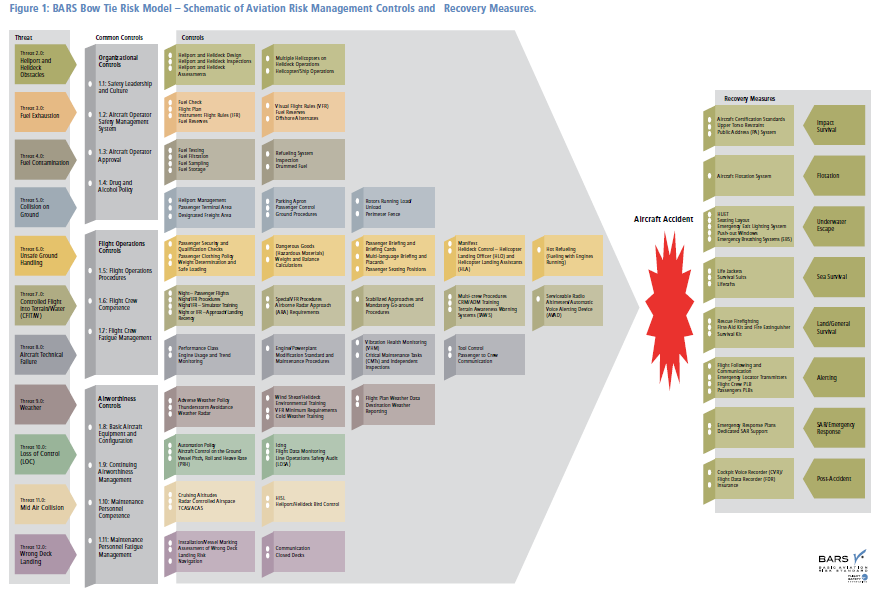
The whole BARSOHO standard is freely available, with an accompanying implementation guide.
EASA has also recently published NPA 2016-01 Helicopter ditching and water impact occupant survivability.
UPDATE 9 January 2017: HeliOffshore have released a HeliOffshore Automation Guidance document and six videos to demonstrate the offshore helicopter industry’s recommended practice for the use of automation.
UPDATE 1 February 2017: BARSOHO Version 3, fully aligned with the HeliOffshore SPM, is issued and available. This has resulted in some reordering and the addition of some extra controls as the standard has evolved.
UPDATE 20 April 2017: Taiwan AS365N3 Tail Rotor Pitch Control Loss During Hoisting
UPDATE 3 September 2017: Night Offshore Training AS365N3 Accident in India
UPDATE 3 May 2018: ATSB issue a preliminary report into an EC135 Marine Pilot Transfer accident at night off Western Australia.
UPDATE 29 September 2018: HEMS A109S Night Loss of Control Inflight
UPDATE 2 November 2019: Taiwan NASC UH-60M Night Medevac Helicopter Take Off Accident
UPDATE 14 December 2019: Fatal Taiwanese Night SAR Hoist Mission (NASC AS365N3 NA-106)
UPDATE 21 December 2019: BK117B2 Air Ambulance Flameout: Fuel Transfer Pumps OFF, Caution Lights Invisible in NVG Modified Cockpit
UPDATE 5 March 2020: HEMS AW109S Collided With Radio Mast During Night Flight
UPDATE 19 April 2020: SAR Helicopter Loss of Control at Night: ATSB Report
UPDATE 11 May 2020: European Search and Rescue (SAR) Competition Bonanza
UPDATE 12 December 2020: NH90 Caribbean Loss of Control – Inflight, Water Impact and Survivability Issues
UPDATE 9 January 2021: Korean Kamov Ka-32T Fire-Fighting Water Impact and Underwater Egress Fatal Accident
UPDATE 29 January 2021: BK117 Impacts Sea, Scud Running off PNG
UPDATE 27 November 2021: TCM’s Fall from SAR AW139 Doorway While Commencing Night Hoist Training
UPDATE 19 March 2022: Offshore Night Near Miss: Marine Pilot Transfer Unintended Descent
UPDATE 8 May 2022: HeliOffshore 2022 Conference Review
UPDATE 28 December 2022: Night Mountain Rescue Hoist Training Fatal CFIT
UPDATE 7 January 2023: Blinded by Light, Spanish Customs AS365 Crashed During Night-time Hot Pursuit
UPDATE 8 July 2023: BK117 Offshore Medevac CFIT & Survivability Issues
UPDATE 16 July 2023: SAR AW139 LOC-I During Positioning Flight
UPDATE 13 July 2024: Fatal USCG SAR Training Flight: Inadvertent IMC
UPDATE 20 July 2024: Night CHC HEMS BK117 Loss of Control
UPDATE 30 August 2025: Flat Light B206L4 Alaskan CFIT & 11 Hour Emergency Response Delay
SAR Consultancy: Procurement, Tenders, Contacts and In-Service Assurance and Aviation Advice
In September 2017 one European Coast Guard selected Aerossurance to be their new aviation consultants after a competitive tender with 7 bidders. In July 2018 Aerossurance started work supporting a second European Coast Guard with a procurement project. The Aerossurance team is and has supported humanitarian aid agencies, air ambulance charities, military air arms, environmental agencies and blue chip energy companies on other emergency service and special mission aviation projects around the world.
The Tender Trap: SAR and Medevac Contract Design: Aerossurance’s Andy Evans discusses how to set up clear and robust contracts for effective contracted SAR and HEMS operations.

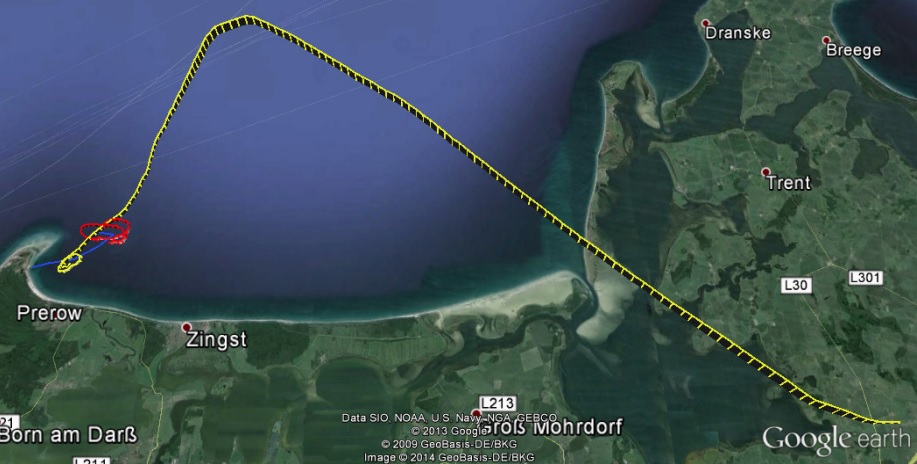
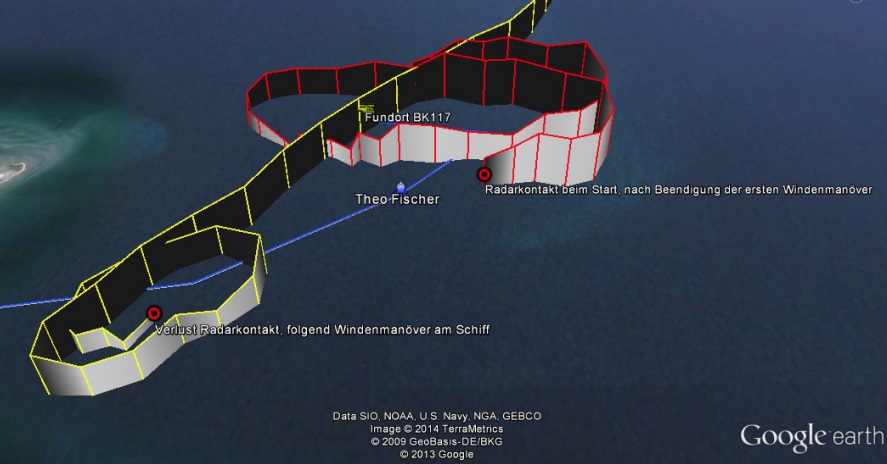
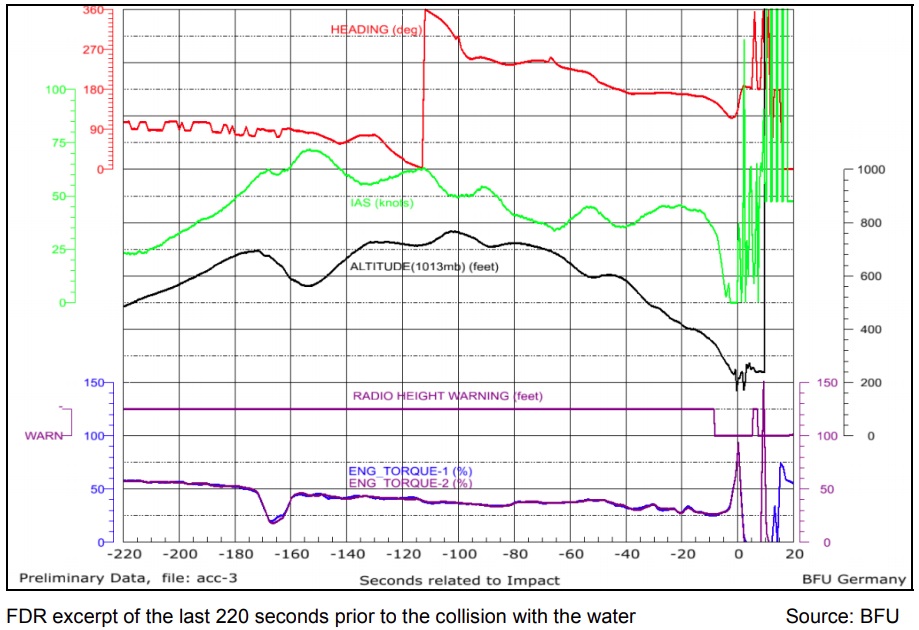

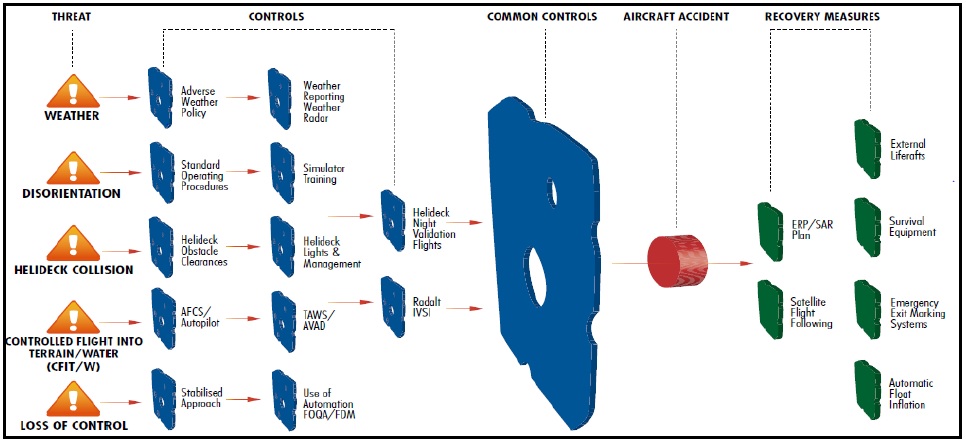
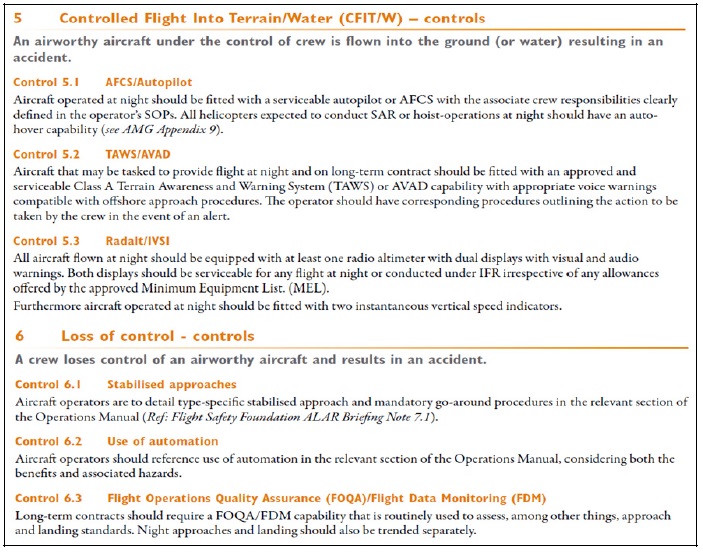

Recent Comments